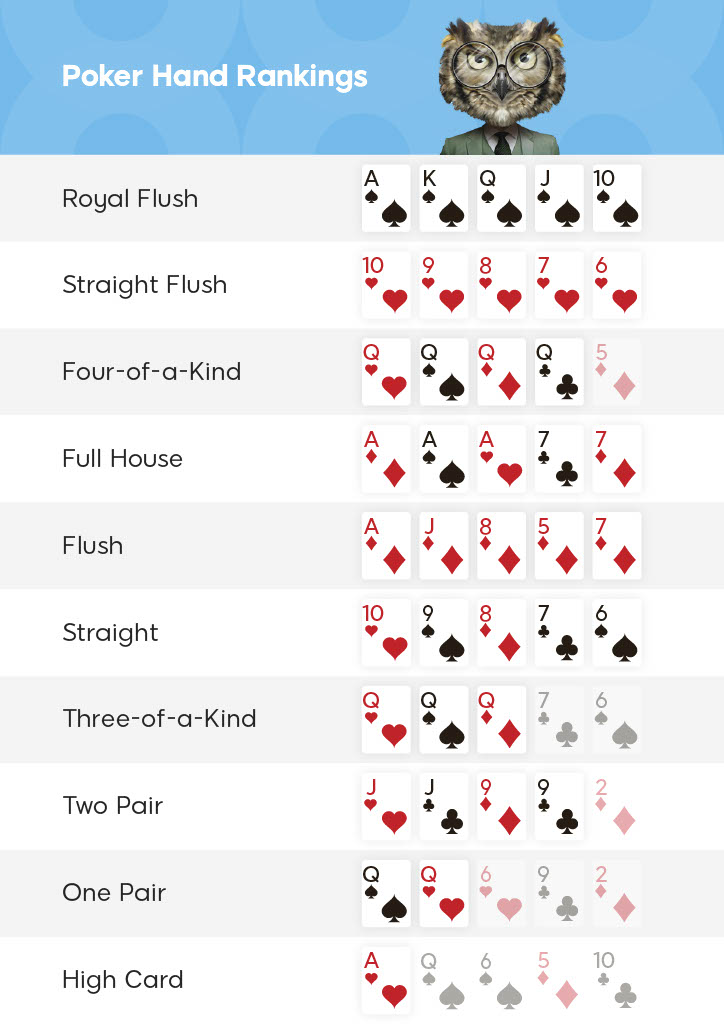When someone asks for the rules of poker, it might be difficult to know what to say. The problem is that there is no single set of rules associated with the game of poker.
Poker is more of an umbrella term for hundreds of different card games (known as poker variants).
Let’s explore some of the similarities and differences between the different brands of poker.
- Winning Hands
- Betting Actions
- Hand Rankings
- Betting Structures
- Variant categories
- Common Variants
- Stud Variants
Winning Hands
The way that players win hands is one of the significant similarities in most poker variants.
The steps are as follows.
- Chips (or money) is wagered on the outcome of each hand. Wagered chips are placed in the centre of the table (known as the pot).
- At the end of the hand (known as showdown), the player with the strongest cards wins the pot.
- Say all players fold (give up on the hand) before reaching showdown. The last remaining player wins all the chips without needing to reveal their cards.
Many poker hands don’t reach showdown. All but one of the players in the hand elects to fold (giving up so that they don’t have to wager more chips).
This scenario adds an important dynamic to the game of poker. It’s possible to try and win the pot by forcing our opponents to fold - even with the worst cards. This play is known as bluffing and is an integral part of the game.
Nearly all forms of poker have an element of bluffing. But it plays a bigger role in some poker variants than others.
Betting Actions
The betting is broken down into multiple betting rounds known as streets.
The number of streets depends on the variant - for example:
- Hold’em - 4 streets
- Omaha - 4 streets
- 7 Card Stud - 5 streets
- 5 Card Draw - 2 streets.
On each street, the action moves around the table in a clockwise direction.
Players have the following options available to them –
- Check - A player decides not to make any bet, and the action continues clockwise to the next player. This option can only be used if no bets have been made so far on the current betting round.
- Bet - A player makes the first bet on a betting round. Other players must at least match this bet (by calling) when it is their turn to act. Otherwise, they will have to exit the hand by folding.
- Call - A player matches an existing bet by placing the appropriate amount of chips into the pot.
- Fold - A player decides he doesn’t want to call the existing bet and prefers to exit the hand. He gives his cards back to the dealer and forfeits any right to win the current pot.
- Raise - A player decides to increase the size of the current bet. All remaining players must at least call this bet if they wish to continue with the hand.
Check out this complete poker betting guide.
Determining the Order of Action
Who acts first on each betting round?
It depends on the game variant. In many poker formats, the order of the action is determined by the position of a small disc known as the button. The player to the left of the button acts first on each betting round.
The button moves around the table in a clockwise direction after each hand to ensure that every player gets a chance in every table position.
In other poker variants, such as Seven Card Stud, the concept of a button does not exist. The first-to-act player on each street is determined by the strength of each player’s visible cards (known as upcards).





